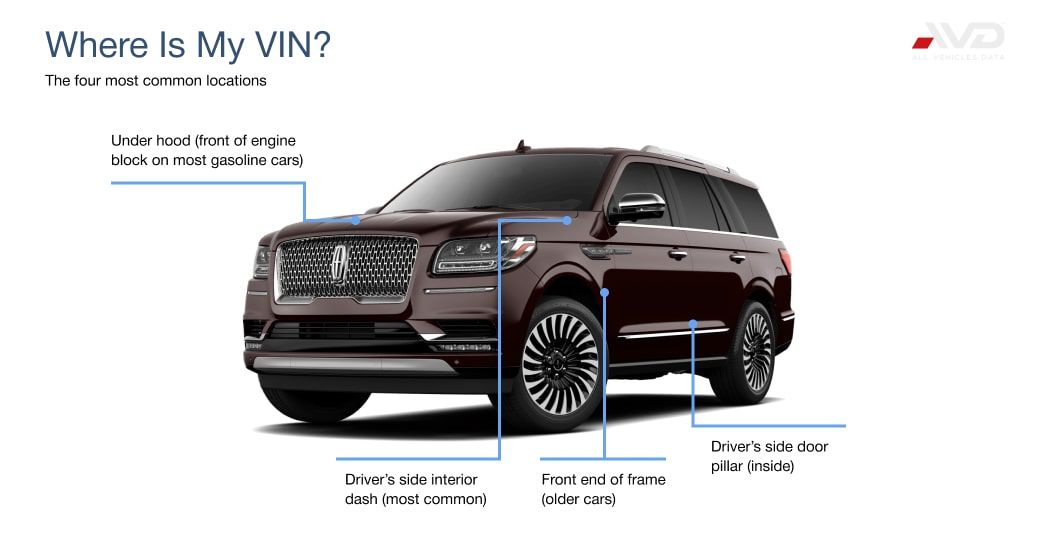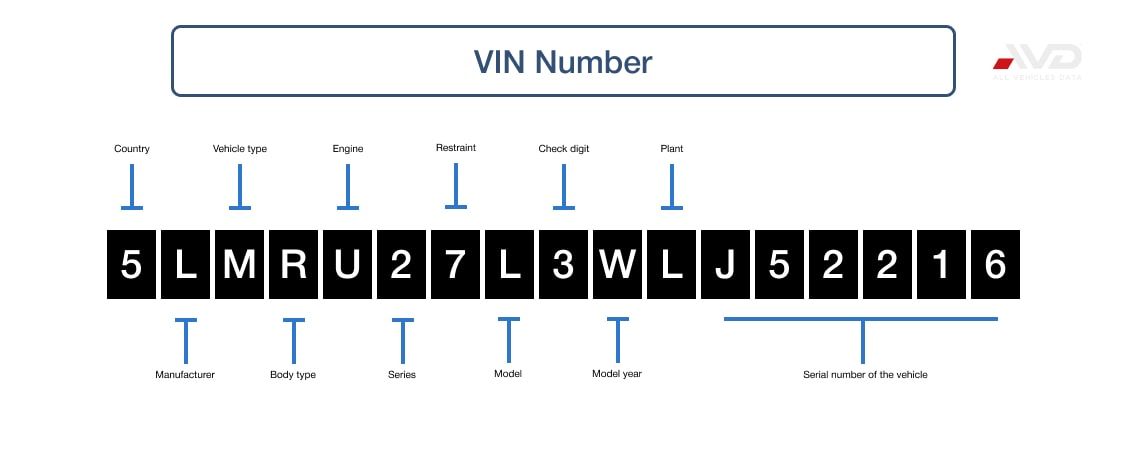What is a Vehicle Identification Number in Northwest Territories?
A Vehicle Identification Number (VIN) is a unique 17-character code assigned to every vehicle manufactured in Canada, per the Canadian Motor Vehicle Safety Standards. The VIN serves as a vehicle's "fingerprint," containing essential information about its make, model, year of manufacture, and other characteristics. In the Northwest Territories, the VIN is a crucial component of vehicle registration. It is used by various government agencies, including law enforcement and insurance companies, to track and identify vehicles.
The VIN is typically composed of a combination of letters and numbers, with each character holding a specific meaning. This standardized format allows for easy identification and tracking of vehicles across different jurisdictions.
How To Find Your Car's VIN number?
In the Northwest Territories, a vehicle's VIN can be found in several locations:
- Dashboard: The VIN is often visible through the driver's side dashboard windshield.
- Driver's side door jamb: The VIN may be printed on a label attached to the driver's side door jamb.
- Vehicle registration documents: The VIN is recorded on the vehicle's registration papers issued by the Department of Infrastructure.
- Insurance documents: The VIN is also listed on the vehicle's insurance papers.
Locating and recording the VIN is essential, as it may be required when registering the vehicle, obtaining insurance, or checking for recalls.

How Many Digits Are In A VIN?
A Vehicle Identification Number (VIN) consists of 17 characters, including both letters and numbers. This standardized format is used across all vehicles manufactured for use in Canada. The 17-character VIN provides a unique identifier for each vehicle, allowing for easy tracking and identification by government agencies, law enforcement, and insurance companies.
It is important to note that all characters in a VIN are significant, and even a single incorrect or missing character can make it difficult to identify the vehicle or obtain accurate information.
How to Decode the Vehicle Identification Number
Decoding a Vehicle Identification Number (VIN) involves understanding the meaning behind each of the 17 characters. Here's a brief overview of what each section of the VIN represents:
- Characters 1-3: World Manufacturer Identifier (WMI), indicating the vehicle's manufacturer and country of origin.
- Characters 4-8: Vehicle Descriptor Section (VDS), providing information about the vehicle's model, body style, engine type, and other characteristics.
- Character 9: Check Digit, which is used to validate the authenticity of the VIN.
- Characters 10-17: Vehicle Identifier Section (VIS), including the model year, assembly plant, and a unique serial number.
One can gather essential information about a vehicle's origins, specifications, and identity by decoding the VIN. This information can be useful for various purposes, such as vehicle maintenance and repairs.

Is Engine Number Different From VIN?
Yes, the engine number differs from the Vehicle Identification Number (VIN). While the VIN is a 17-character code that uniquely identifies the entire vehicle, the engine number is a separate identifier specific to the vehicle's engine. In the Northwest Territories, as per the Motor Vehicles Act, both the VIN and engine number are important identifiers for vehicle registration and tracking.
The engine number is typically stamped on the engine block and can be used to identify the engine's specifications, such as its displacement, horsepower, and date of manufacture. This information is useful for vehicle maintenance, repairs, and engine replacements.
How is a VIN Number Used in Northwest Territories?
In the Northwest Territories, a Vehicle Identification Number (VIN) serves several important functions:
- Vehicle registration: The VIN is mandatory for registering a vehicle with the Department of Infrastructure. It helps to identify the vehicle and track its ownership history uniquely.
- Law enforcement: Law enforcement agencies, such as the Royal Canadian Mounted Police (RCMP), use the VIN to identify stolen vehicles, track vehicle-related crimes, and maintain public safety.
- Insurance: Insurance companies use the VIN to assess a vehicle's risk profile, determine appropriate coverage, and process claims.
- Recalls and safety notices: Manufacturers use the VIN to identify vehicles affected by safety recalls or other service-related notices.
By law, the Motor Vehicles Act requires all vehicles in the Northwest Territories to have a valid VIN for proper identification and tracking.
Who issues a Vehicle's VIN Number in Northwest Territories?
In the Northwest Territories, vehicle manufacturers are responsible for assigning a unique Vehicle Identification Number (VIN) to each vehicle they produce by the Canadian Motor Vehicle Safety Standards. Transport Canada, the federal government agency responsible for transportation policies and programs, regulates these standards.
The VIN is issued during the vehicle's manufacturing process and permanently affixed to the vehicle in several locations, such as the dashboard, driver's side door jamb, and vehicle registration documents. The Department of Infrastructure relies on the manufacturer-assigned VIN for vehicle registration and identification purposes within the Northwest Territories.
The VIN is a federally regulated identifier, and its format and usage are consistent across all provinces and territories in Canada.
Can You Track a Car By VIN Number in Northwest Territories?
In the Northwest Territories, tracking a car by its Vehicle Identification Number (VIN) is primarily done by law enforcement agencies and other authorized parties. The Royal Canadian Mounted Police (RCMP) and other law enforcement agencies have access to databases that allow them to track vehicles using their VINs, which can be useful in cases of theft, fraud, or other criminal activities.
However, tracking a car by its VIN is not readily available for private individuals. The Department of Infrastructure does not provide a public VIN tracking service, as vehicle information is considered personal and is protected under privacy laws.
In some cases, private investigation services or online VIN check providers may offer limited vehicle history information based on the VIN. Still, these services often require a fee and may not provide real-time tracking capabilities.
Can You Tell the Engine Size By VIN Number?
Yes, you can typically determine a vehicle's engine size by decoding its Vehicle Identification Number (VIN). The VIN contains information about the vehicle's specifications, including the engine size, which is usually represented in the 4th to 8th characters of the VIN, known as the Vehicle Descriptor Section (VDS).
However, the exact position and meaning of the characters in the VDS may vary depending on the vehicle manufacturer. To accurately decode the engine size from a VIN, you can refer to the manufacturer's VIN decoding guide or use online VIN decoding tools provided by reliable sources.
Remember that while the VIN can provide information about the original engine size, it does not account for any modifications or engine replacements that may have occurred after the vehicle was manufactured. For the most accurate information about a vehicle's current engine size, it is best to consult a qualified mechanic or refer to the vehicle's service records.
If you have any specific questions or concerns, I recommend contacting the Department of Infrastructure directly or consulting a qualified automotive professional.
